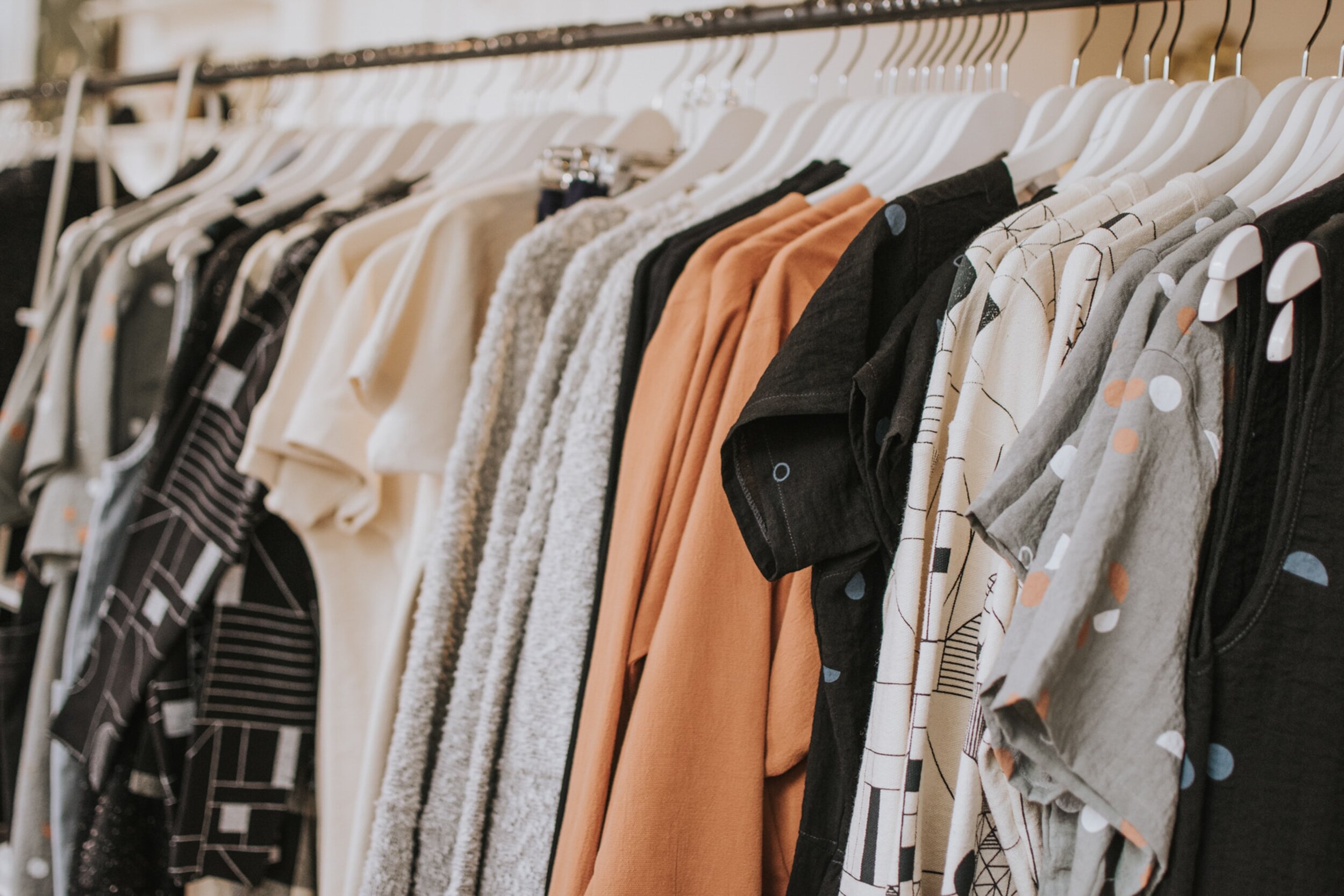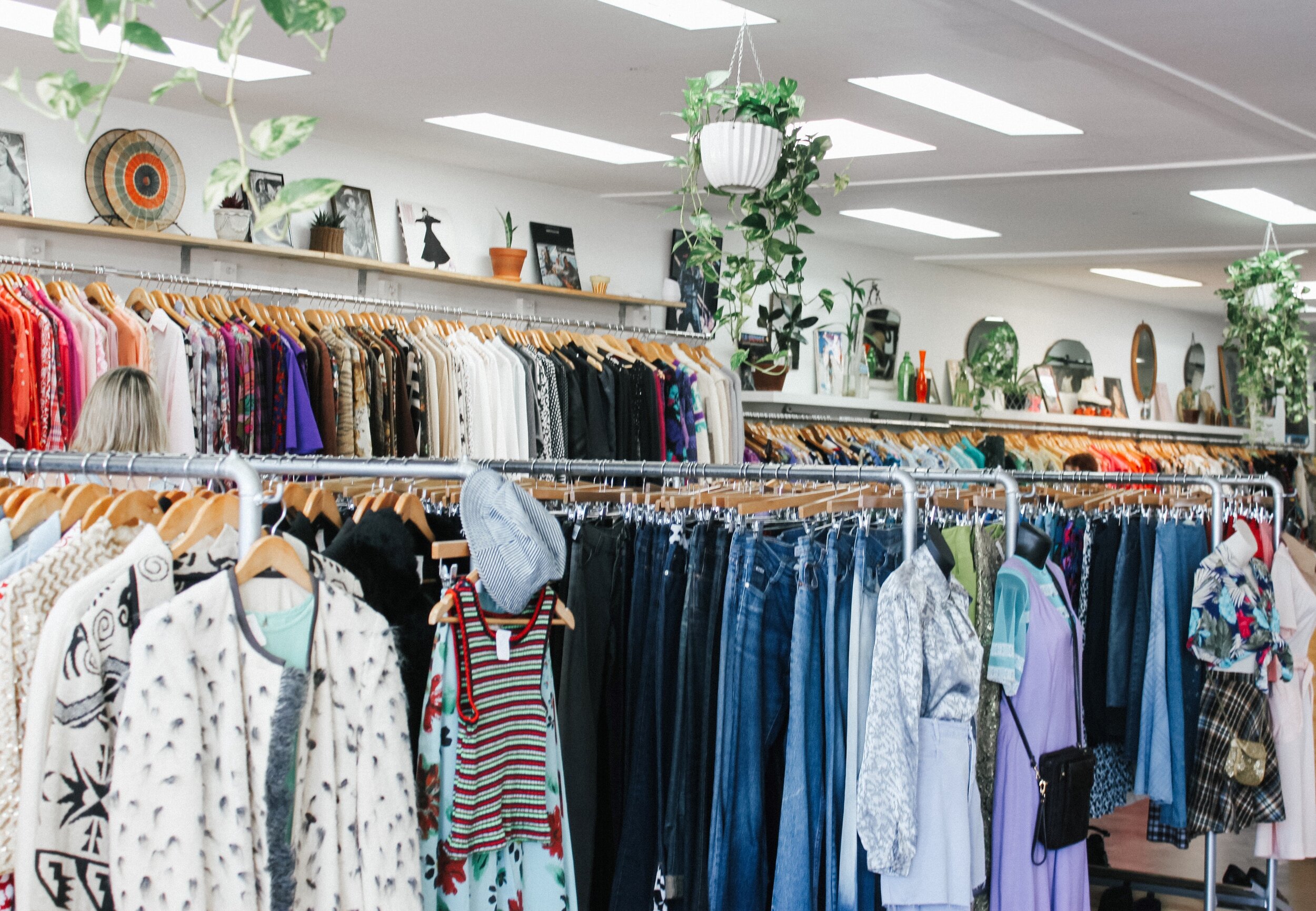Image by Johannes Krupinski
Did you know that 1 in 200 people in the world work in slavery-like conditions? It’s staggering, I know! Advocacy groups cite fashion as one of the top five industries implicated in modern slavery.
What modern slavery is
Modern slavery is described by new laws and labour rights organisations as the exploitation of human beings for commercial gain. Practices like unsafe work conditions, debt bondage, human trafficking, forced labour, excessive & unpaid overtime and involuntary servitude are some of the makings of modern slavery. Activities like these are the target of emerging laws determined to end these practices. There are roughly 40 million people in slavery today. Data from the UN states that modern slavery garners over $150 billion in profits and is the second-largest criminal industry in the world. SDG 8.7 is a pledge to end modern slavery, with the goal of reducing the number of people affected by 10,000 every day.
Uyghur Region, the modern slavery capital of China
According to a coalition of more than 180 human rights groups, many of the world’s biggest retailers and fashion brands are complicit in modern slavery conditions being perpetrated on millions of people in the Xinjiang region of Northwestern China. In this region, cotton and yarn are produced through an enormous system of detention and forced labour using approximately 1.8 million Uighur and other Turkic Muslim people. Made of enslaved factories, farms and prison camps, it’s said to be the largest confinement of an ethnic and religious minority for forced labour since World War II.
China is the biggest cotton producer in the world and its Xinjiang region produces 84% of the country’s cotton. It is believed that this cotton can be found in one-fifth of cotton products worldwide, including PPE exported to many countries.
Image by Trisha Downing
Fashion supporting slavery
G20 countries imported $US127.7 billion of fashion garments identified as at-risk products of modern slavery. 40% of all fashion industry textiles use cotton. Global fashion brands source so extensively from Xinjiang despite these abuses. Chloe Cranston, business and human rights manager of Anti-Slavery International has said there’s a high likelihood that every high street and luxury brand runs the risk of being linked to what is happening to the Uyghur people. A coalition of human rights groups says that brands like Tommy Hilfiger, Gap, Adidas, Calvin Klein, C&A and Muji have been identified as brands sourcing from the region or farm factories connected to forced labour.
Modern slavery in the West: The Boohoo story
There is an estimated 1,400 to 15,000 modern slaves in Australia today, an estimated 100,000 to 400,000 in the US and about 130,000 in the UK.
It came to light in July 2020 that Boohoo (a UK online fashion conglomerate), had been engaging in modern slavery practices in their factories in Leicester, UK. Workers were being paid £3.50 an hour against the legal minimum wage requirement of £8.72 for workers aged 25 and over. The discovery was made during the localised lockdown period owing to the COVID-19 pandemic. The company was putting employees at risk by working in factories that did not have social distancing measures in place.
Undeterred by the injustice, an estimated 643 influencers were still spruiking the brand’s apparel during the height of this scandal in the first 2 weeks of July. The brand’s share prices have now rebounded and more influencers are back to promoting their hugely discounted clothing. With all of this, the brand has enjoyed rare financial success in the time of the coronavirus crisis. Amid the row of modern slavery and poor work conditions, the company’s profits have soared by 51% in September this year.
COVID, the excuse of fashion brands
When the COVID-19 pandemic began this year, big fashion and apparel brands engaged in one of the biggest corporate unethical dealings. They refused to pay for products they asked suppliers to make. According to a recent report, “Unpaid Billions”, authored by the Worker Rights Consortium and Centre for Global Workers’ Rights, this has resulted in $16 billion missing from the apparel supply chain, which is owed to suppliers. The report states that $1.6 billion of this amount represents garment workers’ unpaid wages. Millions of garment workers have lost their jobs and become extremely destitute because of this circumstance. Mainly in countries like Bangladesh, India, Myanmar and Cambodia. The fashion industry for years has been rife with slavery conditions of human rights abuses and exploitative practices. The Global Slavery Index estimates that 58% of people in slave labour are in the major cotton or garment-producing countries of the world such as China, India, Pakistan, Bangladesh and Uzbekistan. The refusal of big brands to pay for orders and using the COVID pandemic as an excuse, has made bad situations unimaginably worse for workers.
Slavery is not the stuff of human nature
Human beings are born with the innate ability to think, analyse and choose. And with the freedom to develop themselves and the freedom to ennoble their environments. These are embedded in human nature. Enslaving human beings is, therefore, an abomination onto the human race. Freedom is a fundamental right, always. No one has the right to enslave another human for profit or any other reason. Its unnatural and absolutely incompatible with the human spirit and it does not befit humankind. Where slavery is enforced, it’s a real scourge on collective humanity. We should have systems that protect the sanctity of human freedom by ensuring everyone is insulated from conditions that make slavery possible.
Image by Jonathan Sebastiao
Actions that have sparked change
Brands - Nearly the entire global apparels industry is tainted by forced Uyghur and Turkic Muslim labour, according to Chloe Cranston. The executive director of the Uyghur Human Rights Project, Omer Kanat has said “Global brands need to ask themselves how comfortable they are contributing to a genocidal policy against the Uyghur people. These companies have somehow managed to avoid scrutiny for complicity in that very policy – this stops today,” The End Uyghur Forced Labour coalition insists that the global apparel industry must eradicate all materials and products connected with the forced labour of Xinjiang in less than a year. The coalition is made up of more than 70 anti-slavery organisations, Uyghur rights groups and labour rights campaigners.
US House of Representatives - In September this year, the US House of Representatives passed the Uyghur Forced Labour Prevention Act (H.R. 6210). The bill is created to put an end to forced labour of the Uyghur Region in corporate supply chains. When executed, it will establish the legal presumption that any products arriving at US ports manufactured in or through the Uyghur Region were made from forced labour, unless it can be proved otherwise. If not, they will be barred from entering the US.
Petitions – Remake created a #PayUp petition campaign at the start of the COVID-19 pandemic to demand fashion brands pay money that was owed to garment workers. It resulted in $22 billion being unlocked to garment workers. This money saved the lives of millions of workers experiencing food and housing insecurity.
Tech – In some cases, tech might be used to monitor conditions of modern slavery. For instance, a drone was used to record ariel footage as evidence of Uyghur brutality with hundreds of Uyghur men blindfolded, shackled and being transported.
To map forced labour patterns and predictions, the University of Nottingham, UK has used artificial intelligence with satellite imaging. In South Asia for instance, it can be used to map brick kilns in places considered to be hotspots for debt bondage and forced labour.
How we can create change
1. Ethical Clothing Australia (ECA) is an accreditation body focused on ensuring that local textile, clothing and footing workers are being paid appropriately, receiving all their legal minimum entitlements and working in safe conditions throughout the entire supply chain. Shop with ECA accredited brands here. Find ECA accredited ethical manufacturers here.
Find other global ethical clothing accreditation bodies here.
2. Worker Rights Consortium is an independent labour rights monitoring organisation. They hold corporations accountable and protect worker rights. Use WRC’s COVID-19 Brand Tracker to see which brands are acting responsibly towards suppliers and workers.
3. Support the coalition to End Forced Labour in the Uyghur Region. The Coalition is a group of civil society organisations and trade unions united to end state-sponsored forced labour and other egregious human rights abuses against people from the Uyghur Region. Join their call to action here.
4. Write directly to fashion brands (social media, email and direct mail) insisting they no longer use materials sourced from modern slavery. Also request full transparency in their supply chain. Find a letter template from Freedom United here.
5. Sign a petition (or two). Here are several petitions you can sign to help make a difference: Freedom United, Change.org, Payup Fashion, Oxfam, Labour Behind the Label, and Traidcraft Exchange.
6. Organisations can fill a form to endorse the call to action on human rights abuses in the Uyghur Region. Find the form here.
7. Lobby your local, state, regional and federal governments to create policies that will end modern slavery locally and internationally. A good example is the legislation made by the US House of Representatives. International trade agreements are an area to focus on that have major implications on modern slavery in multiple countries.
Considering slavery is very much against the essence of humanity, are we also complicit when we remain silent in the face of modern slavery or when we purchase products made from conditions of modern slavery?
♥ Nina Gbor
Instagram: @eco.styles
https://www.globalslaveryindex.org/2018/findings/global-findings/
https://www.workersrights.org/wp-content/uploads/2020/10/Unpaid-Billions_October-6-2020.pdf
https://www.commonobjective.co/article/modern-slavery-and-the-fashion-industry















